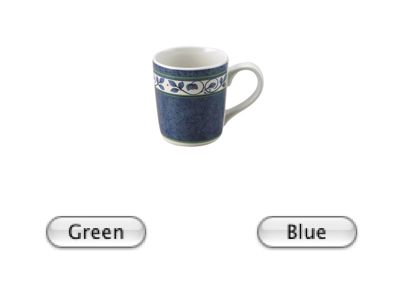
The mug – which is blue or green – is always in the middle. But the position of the handle does the same job as the colour earlier on: It primes you to move faster to hit the button. In this case, it’s faster to move left.
You can help but see how to use this mug and, in some small way, you respond to that.
It’s the same as how you can’t help but push doors with flat plates on them—especially when you’re in a hurry and not really concentrating.
The thing is that perceiving is already half-way to responding. Neurons representing the features of the object – colour, position, everything – fire in your brain. Those same neurons inflect the way you respond. And they include, at the same ontological level, usage. Like grasping.
If the mug is shown in an awkward position, like it’s far away or twisted round, it doesn’t prime the direction. But hang on, that’s to do with the way your hands work, not your brain.
Your movement system influences your perception system.
I’m going to get back to interfaces now, and this is why. There’s one more wrinkle.